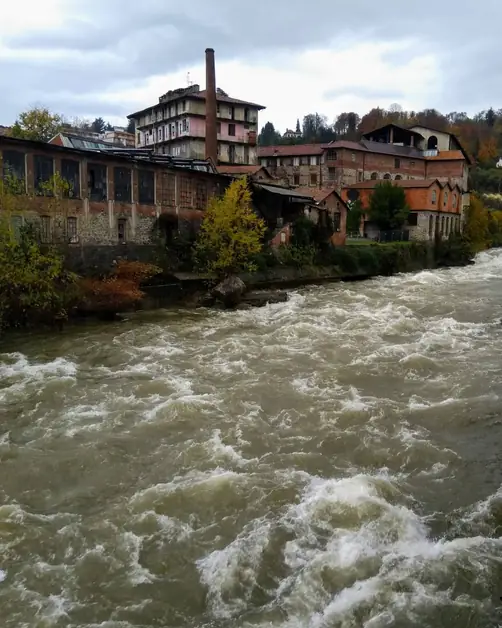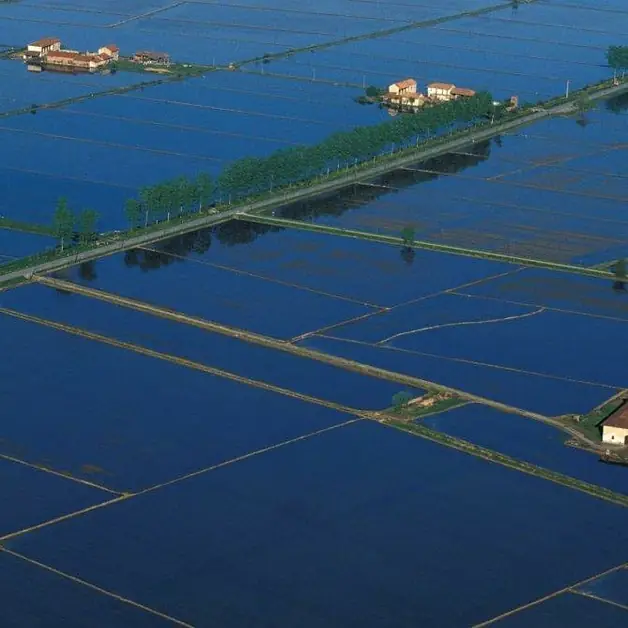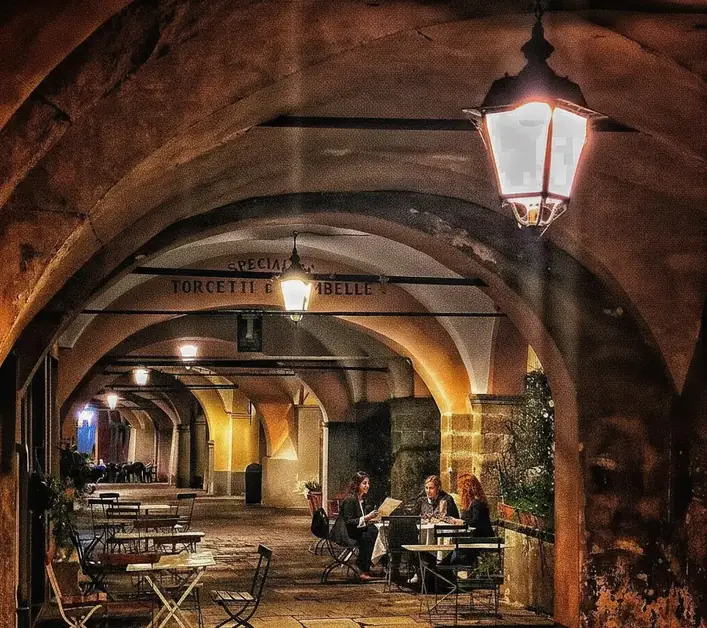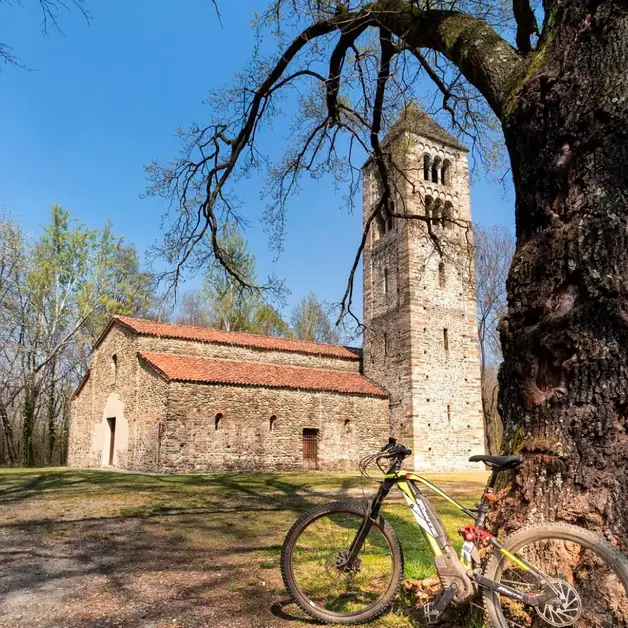The Cervo Stream and Its Industrial History
The Cervo stream symbolizes the industrial history of Biella.

What is the connection between the Cervo stream and the industrial history of Biella?
The Cervo stream is one of the most important symbols of the industrial history of the Biella area. Its waters, flowing clear from the Biella Alps, have fueled the economic growth of the city of Biella and surrounding municipalities for centuries. Since the 16th century, its banks have hosted workshops, mills, paper mills, and later wool factories that harnessed hydraulic energy to power machinery such as fulling mills and looms. Thanks to the Cervo, Biella became one of the main textile hubs in Europe, blending innovation, tradition, and nature.
How did the use of the Cervo stream for production purposes begin?
The first documented activities along the Cervo date back to the 16th century. At that time, the waters of the stream were used to power grain mills, hemp beaters, and paper mills. Local communities understood the enormous potential of hydraulic energy, a clean and inexhaustible resource that allowed machines to operate without fuels. Along its banks, small artisanal realities developed that would eventually transform into true industries.
When did the great Biella textile industry along the Cervo develop?
Between the 19th and 20th centuries, Biella underwent a radical transformation. Industrialization led to the construction of large production complexes, often built of red bricks with tall chimneys and arched windows. These buildings, inspired by English “Manchester” industrial architecture, marked the beginning of the golden age of the Biella textile industry. The factories along the Cervo processed wool, silk, and cashmere, attracting thousands of workers and transforming the area into one of Europe's capitals of wool.
What were the main wool factories active along the Cervo stream?
Along the course of the stream arose some of the most famous companies in Italian textile history. Among these were the Lanificio Boussu, Lanificio Trombetta, Lanificio Maurizio Sella, and the large plants of Lanificio Rivetti, key players in the industrial expansion between the 19th and 20th centuries. These companies became synonymous with quality and innovation, exporting their fabrics worldwide. The complexes were equipped with hydraulic wheels, turbines, and later electric generators that harnessed the water of the Cervo to produce energy.
What role did the transition from hydraulic to electric energy play?
With the arrival of electricity, textile production along the Cervo changed profoundly. The new buildings, constructed between the late 19th century and the early decades of the 20th century, are distinguished by the typical “shed” roof, which allowed natural light to illuminate the departments. This transition marked the end of the exclusive use of hydraulic energy and the beginning of the modern era of the Biella industry, which was more efficient and productive but still linked to water as a vital element.
Why is there talk of "industrial archaeology" along the Cervo stream?
Today, many of the buildings constructed during that period are considered valuable examples of industrial archaeology. Along the banks of the Cervo, one can still admire abandoned factories, brick workshops, and chimneys that tell the story of labor and human ingenuity. Some of these spaces have been restored and repurposed into cultural centers, museums, and exhibition spaces, becoming places of memory and creativity. Others continue to host active textile companies, demonstrating a tradition that is still alive.
What are the most notable examples of cultural repurposing along the Cervo?
One of the most famous is the Lanificio Maurizio Sella, now home to the Sella Foundation and various cultural and photographic projects. The ancient industrial environments, carefully restored, house archives, exhibitions, and initiatives dedicated to the history of the territory. Other former factories, such as those in the Tollegno and Vigliano Biellese areas, have been recovered for events, exhibitions, and workshops, contributing to the enhancement of Biella's industrial heritage.
Are there still active textile industries along the Cervo?
Yes. Despite the economic transformation of recent decades, many textile companies still operate along the Cervo, producing high-quality fabrics for international luxury brands. Companies in the Biella district continue to rely on the purity of the waters and the expertise passed down from generation to generation. The area is therefore a rare example of continuity between past and present, where the industrial tradition is constantly renewed.
What do the industrial buildings of the Cervo tell us today?
Every building, every chimney, and every hydraulic wheel tells the story of a community that has managed to transform a natural resource into wealth and innovation. The architectures, often immersed in greenery and overlooking the stream, are testimonies of a balance between man, water, and industry. The brick facades, large windows, and metal structures evoke an era of intense labor and artisanal pride.
How does the Cervo stream integrate with the urban environment of Biella today?
The Cervo flows through Biella from north to south, accompanying the city in its development. In recent years, pedestrian and cycling paths have been created to discover the historical sites of the textile industry along its banks. This integration of nature, architecture, and culture makes the Cervo not just an industrial river, but also an element of territorial and tourist identity.
Why visit the sites of Biella's industrial archaeology?
Visiting the Cervo stream area means taking a journey through time. It is possible to walk among ancient factories, listen to the sound of the water that once powered the machines, and understand how nature has supported human ingenuity. It is an experience that unites history, landscape, and culture, offering an authentic glimpse into a fundamental part of productive Italy.
What is the future of the industrial area along the Cervo?
The future of the Cervo stream and its industries lies in the balance between innovation and preservation. Active companies continue to invest in sustainability and eco-friendly technologies, while abandoned sites are being enhanced as cultural spaces. The goal is to keep the memory of the past alive while simultaneously building a harmonious development model, where water — the same that for centuries has turned the wheels of fulling mills — continues to be the lifeblood of the territory.
A river that unites history, work, and beauty The Cervo stream is not just a watercourse: it is a thread that connects centuries of history, labor, and creativity. Its banks tell of men and women who have managed to value nature to build a solid economy and a unique cultural heritage. Today, among restored factories, museums, and crystal-clear waters, the Cervo continues to flow as a symbol of rebirth and identity for the entire Biella area.



